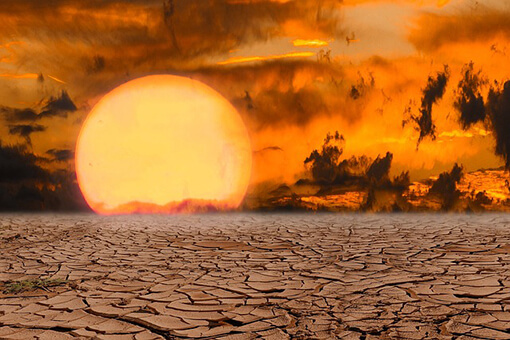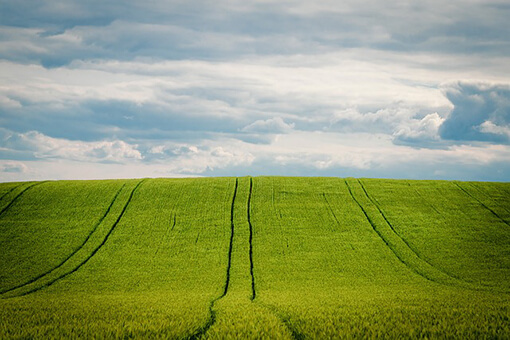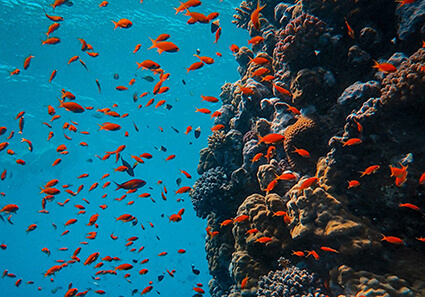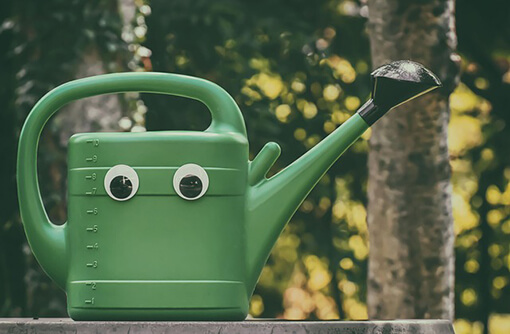Hi! It’s konkaz (@konkazuk).
What’s going on? Has everyone just given up already?
We were supposed to keep global warming below 1.5°C under the Paris Agreement — and now we’ve hit 1.7°C.
We’re almost at 2°C!!!
To justify being a workaholic, we come up with noble-sounding excuses like “I’m building wealth for my children’s future” (which is important, of course), all while avoiding reality, clinging to a vague sense of competition, and pretending not to notice climate change…
And then you finally get to the point where you’ve saved up enough money, paid off the mortgage…
only to find yourself in a world where food is running out, supply chains have collapsed, and people are fighting over water and scraps of food to survive.
You thought your wealth would keep you safe — but the supermarket shelves are empty, the taps have run dry, and it’s not shopping anymore, it’s a fight for survival.
What a wonderful world we’re leaving for the next generation, huh?
So, this article is all about what it means if we hit the 2°C threshold.
The Food Shortage and the Breakdown of Law and Order

The phrase ‘climate change’ has become so commonplace, just like terms such as ‘discount sales’ or ‘Buy one, get another one for free’, and it now exists in our daily lives without having any real impact.
This means that words like ‘heatwaves’, ‘wildfires’, and ‘droughts’ no longer resonate with us, and unless they happen in our own country, they seem irrelevant, like problems happening to others…
No, no, no, that’s definitely not true!
What occurs in other countries will undoubtedly have an impact on every nation on the planet.
What most people are likely misunderstanding is that…
the ‘2°C average rise’ refers only to the overall global average.
Some areas are experiencing temperature increases of more than 5°C, and in countries close to the equator, there have been cases where the temperature increase has already gone well beyond 2°C compared to the period before the Industrial Revolution.
This will make it impossible for crops to grow!
To briefly explain the path leading to the global food crisis, which is fast approaching…
① First, in developing countries close to the equator, intense heatwaves and droughts will prevent crops from growing, leading to agricultural collapse in one region after another. (In fact, it will be so hot that people will be unable to work in agriculture due to heatstroke.)
② As agricultural collapse leads to severe food shortages locally, even countries that rely on imports will face soaring food prices globally due to supply shortages.
③ People will begin migrating in search of food and water, seeking safer places for survival. ‘Climate refugees’ will cross borders, and social instability begins to spread worldwide.
④ The refugee crisis and political tensions will affect key chokepoints such as the Suez Canal and the Malacca Strait. Food and resource transport routes are disrupted, causing prices to rise sharply. (Pirates may also emerge in these situations.)
⑤ As logistics break down, a fight for food begins even in developed countries, causing law and order to collapse. The illusion of safety in rich countries will crumble, supermarket shelves will empty, and everyone will suffer from rising prices. Crime such as burglary, looting, and murder will become commonplace, and wars may break out between nations.
Ignoring climate change and just carrying on as usual is like sitting around and waiting for food shortages and war to break out.
We’re completely out of time to take it easy.
The Reasons We Haven’t Seen a Food Crisis (Yet)

A quiet but undeniable countdown to a global food crisis has already begun.
Agricultural damage caused by droughts, floods, and extreme heat is becoming increasingly severe in equatorial countries like those in Africa, the Middle East, and South Asia. In many regions, crops are failing and harvests are plummeting.
Then why does the world still appear to be maintaining some kind of balance—at least for the time being?
It’s because global warming has made more land in higher-latitude northern countries suitable for farming, which has temporarily boosted crop production.
In fact, wheat yields have been rising in Canada, and farmland has expanded in Russia.
In other words, globally speaking, we haven’t quite reached the stage where a worldwide food crisis hits all at once.

It’s a bit like how GDP doesn’t drop despite rising inequality, because the ultra-rich are raking in so much money that it offsets the losses of the poor.
But the ‘positive effects’ seen in northern countries won’t last forever.
If warming continues, even these areas may experience extreme weather events like droughts and floods due to growing climate instability.
When that happens, global agricultural production will inevitably plummet, and the hidden food crisis will come to the surface.
The Death of Coral Reefs

It’s said that even a 1.5°C rise could severely damage coral reefs, killing up to 90% of them—but at 2°C, they’re expected to be almost completely wiped out.
Coral reefs, known as the ‘rainforests of the ocean’, are vital to around a quarter of all marine life that relies on them for breeding and shelter.
If reefs vanish, marine life will vanish too.
…And if fish disappear, it doesn’t just mean humans won’t be able to eat them anymore — it also means that many marine creatures that rely on fish for food will die out as well.
Consequently, local fishermen will be robbed of their way of life and suffer serious economic hardship.
Furthermore, coral reefs function as ‘natural barriers’ by absorbing the impact of high waves and typhoons. Without them, coastal cities will be left exposed to the devastating effects of storm surges and tsunamis.
With the force of the waves directly striking the coast, sandy beaches are washed away, and the accelerating sea level rise from warming further speeds up the loss of land.
So, What Can We Do?

So, what can be done? Personally, I think the most crucial thing is to fully acknowledge the reality that ‘climate change is a serious problem,’ regardless of where we live, and to prioritise it at the top of our daily lives.
And first and foremost,
it’s important to genuinely take an interest in climate change and start learning by researching and studying it.
I know that life gets busy, and there will surely be days when nothing can be done, but still, keep climate change at the top of your priority list.
As you continue learning, your understanding will deepen, and you’ll gain the knowledge needed to explain to your family and others why this is happening—and why it’s so crucial to take action.
At the individual level, it’s easy to feel like there’s little we can do. But by learning and sharing what you know with those around you, the circle of awareness gradually expands. And if that spreads across communities and grows into millions of people, it becomes a powerful force.
Once awareness spreads, people with similar concerns naturally start connecting and begin taking part in environmental events—say, once a month—gradually expanding their involvement in climate action.
We are blindly consuming the resources our children, grandchildren, and even our own future will depend on—at a staggering pace and without replenishment. And since they’re being produced out of sight, in places we never see, we stay completely disconnected from the damage we’re causing.
We can’t act on what we don’t understand—so uncovering what’s hidden is the first step towards real change.
Finally, here are a few examples of what individuals can do to make a difference.
🔹 Go meat-free a few days a week
Because people today eat too much meat, vast amounts of food that could help feed the hungry in developing countries are being fed to livestock instead.
According to George Monbiot’s book Regenesis, the breakdown of the total weight of mammals on Earth is…
Livestock ➡︎ 60%
Humans ➡︎ 36%
Wild animals ➡︎ 4%
Isn’t that a shocking figure?
To make matters worse, this demand for livestock feed is driving deforestation, trapping us in a vicious cycle.
Therefore, even without giving up meat entirely, simply having a few ‘meat-free days‘ each week—on a global scale—could make a real difference!
🔹 Changing the Way We Travel
Are you using your car for short trips, like going to the local supermarket?
For shorter distances, consider walking or cycling instead—it’s healthier and better for the planet.
🔹 Participation
We’ll eventually have to take a stand against companies and organizations that prioritize profit over the environment and do whatever they please.
While we can’t win that battle as individuals alone, we can choose to support political parties and representatives who take climate action seriously.
When people unite, it becomes possible to push local authorities and companies to take real action on climate change.
Well, I’m still on my learning journey, but today I explored what could happen if global temperatures rise more than 2°C since the Industrial Revolution.
Thanks for reading all the way to the end!
Until next time,
konkaz
*You can read this blog post in Japanese from the link below.
👉 気候変動が2℃を超えた未来とは?世界で起こる危機と私たちの選択

